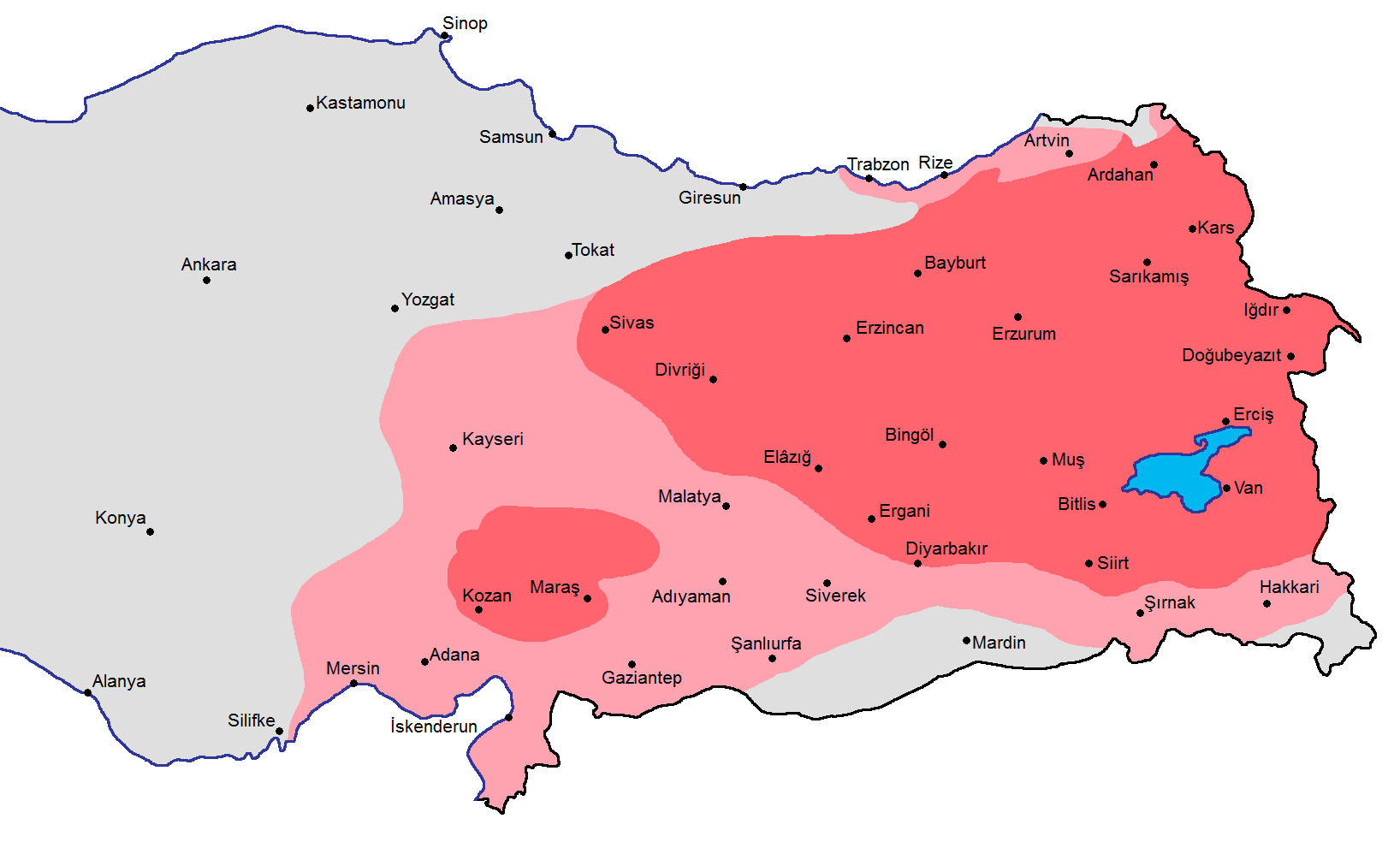I was reading an article on the Armenian genocide and it got me interested in this concept of 'Western Armenia' so after doing some browsing i was stunned to find out that massive swathes of Eastern Turkey were predominantly populated by Armenians yet this isn't represented in the game. Looking at a few maps I've come to the conclusion that in fact 5 provinces in the game that do not have Armenian as prime culture should do.

Looking at this map the dark red areas were areas with an Armenian majority in the early 16th century. These would account to Sivas, Erzincan, Erzurum, Diyarbakir and Mush. I dont see the point in inclduing the enclave which is Marash.

This map is of the Armenian Eyalets of the Ottoman Empire and further back up my point as they roughly are the provinces i have mentioned.
Frankly im not too sure the reason of ignoring the Armenians was. I understand that weren't many Armenians here but these regions were sparsely populated and the Armenians made up the majority of the population. Unfortunately there aren't many Armenians living in these areas present day due to the genocide which is maybe why they aren't represented in game. Now these provinces in the game would have Armenia as primary culture, coptic as relgion and Armenian core as well.

Looking at this map the dark red areas were areas with an Armenian majority in the early 16th century. These would account to Sivas, Erzincan, Erzurum, Diyarbakir and Mush. I dont see the point in inclduing the enclave which is Marash.

This map is of the Armenian Eyalets of the Ottoman Empire and further back up my point as they roughly are the provinces i have mentioned.
Frankly im not too sure the reason of ignoring the Armenians was. I understand that weren't many Armenians here but these regions were sparsely populated and the Armenians made up the majority of the population. Unfortunately there aren't many Armenians living in these areas present day due to the genocide which is maybe why they aren't represented in game. Now these provinces in the game would have Armenia as primary culture, coptic as relgion and Armenian core as well.
Last edited:
- 37
- 6
- 3
Upvote
0





